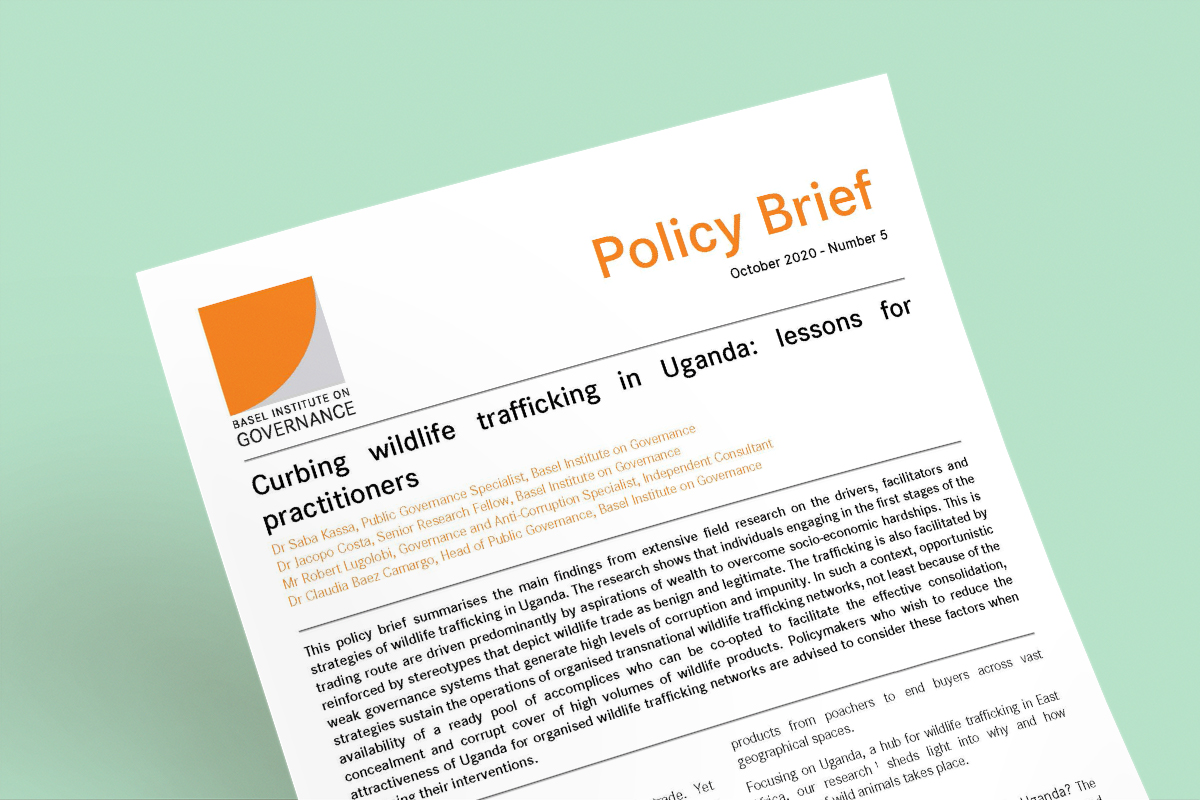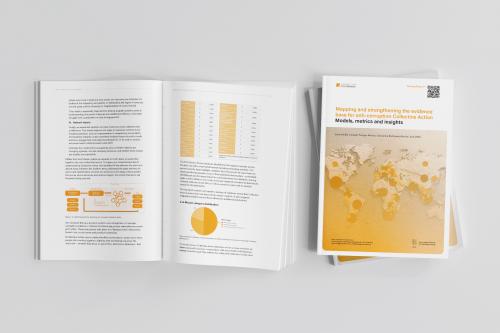Policy recommendations: combating wildlife trafficking in Uganda

Turning wildlife trafficking into a high-risk, low-profit trade is challenging. Our recent research on why and how wildlife trafficking happens in Uganda gives some insights into the factors that sustain the supply of large volumes of wildlife products moving from wildlife habitats in Africa to the hands of consumers all over the world.
The research shows that structural drivers of weak governance systems and constrained socio-economic contexts provide the macro-level conditions for illegal activities, such as wildlife trafficking, to flourish in Uganda.
Attempting to curtail wildlife trafficking should therefore also consider, account and address the underlying structural foundations of high levels of poverty and corruption that provide a conducive environment for illicit activities and economies.
Considerations for wildlife trade prevention in Uganda
Practitioners working on developing approaches to fight wildlife trafficking and the associated corruption should consider the following:
- Islands of effectiveness: Although the Ugandan governance context certainly presents significant challenges, it also provides examples of how it is possible for “islands of effectiveness” to emerge. This term refers to institutions which, despite being embedded in challenging contexts, manage to implement reforms and mechanisms that allow for meaningful improvement in institutional performance and control of corruption outcomes. From this perspective, promoting stronger performance in preventing wildlife trafficking would require attention to working with and incentivising anti-corruption and wildlife “champions” and leaders. It also means closely aligning approaches with national priorities such as the economy, social welfare, corruption and financial crime, natural resource management, environment and peace and security.
- Alternative economic opportunities: The development of sustainable schemes to generate alternative economic opportunities for vulnerable groups will be needed to make it less attractive for individuals to support wildlife trafficking. Experiences of reformed poachers confirm that providing alternative livelihood sources or income-generating activities associated with wildlife habitats is an effective deterrent to becoming involved in wildlife trafficking.
- Addressing stereotypes: Tackling adverse mental models involves utilising behavioural insights to develop effective information or edutainment campaigns that challenge conventional wisdoms. Public awareness campaigns could disseminate stories and illustrative examples that challenge prevailing beliefs about wildlife and make it less socially acceptable to support wildlife trafficking. The messages could potentially be reinforced through positive role models and could also be tailored to expose the hidden costs of wildlife trafficking and corruption that hurt communities and individuals.
Holistic approaches that tackle both the supply and demand for wildlife products are important. Equally important is to put the spotlight not only on poachers but on the organised criminal networks above them and equally the consumers of wildlife products at the end stage of this illicit market.
As part of a holistic approach, it is crucial to not only focus on punishment but also prevention. Programmes should consider the drivers, facilitators and functionality of participating in wildlife trafficking.
Moreover, it is essential that high levels of political support and strong (regional) collaborative law enforcement measures converge with conservation efforts at the grassroots level. This should translate into tangible improvements in the lives and livelihoods of those living near wildlife habitats.
All of this would contribute to Uganda becoming the path of most resistance for wildlife trafficking.
Six key lessons for practitioners
- Understanding and addressing context-sensitive drivers of wildlife trafficking can complement traditional approaches to curbing the trade.
- Incorporating insights from behavioural theory about how to challenge prevailing stereotypes and bring to light hidden costs associated with the illegal wildlife trade can provide more grassroots legitimisation for the fight against it.
- Wildlife trafficking does not operate in a vacuum. It therefore can only be addressed holistically, considering the larger macro-level conditions of weak governance that provides the background for all sorts of illegal activities to flourish.
- Wildlife trafficking networks operate via informal structures of social connections between poachers, middlemen and buyers across vast geographical spaces. The networks are organised yet fluid and dynamic at the same time. Shedding more insights into the invisible social infrastructure that sustains the illicit trade can provide key insights into ways in which to disrupt these networks.
- Corruption too often is seen as a tactic – a financial exchange that facilitates the evasion of the law enforcement system. But corruption involves relationships too, social bonds through which public officials are co-opted into the social infrastructure of the network. Insights into the role of public officials in the trafficking networks are crucial to understanding the ways in which rules and regulations are undermined.
- “Lack of political will” is a catch-all phrase to explain why laws are in place but systematically undermined. Understanding the particular behaviours that facilitate wildlife trafficking and the incentives that give rise to them can shed light on institutional junctions and processes where corruption risks are highest and which explain why an implementation gap is persistent. This more precise understanding of the problem should be the starting point to develop better interventions.
Learn more
- Download the full policy brief here.
- Read Working Paper 33: A worm’s-eye view of wildlife trafficking in Uganda – the path of least resistance.
- Find out more about our Public Governance team and their current research projects.
- Learn more about the Basel Institute's Green Corruption programme, including our two-year PMI Impact-funded project to prevent corruption from fuelling illegal wildlife trade along the East Africa - South East Asia route. We are grateful to PMI Impact for funding this valuable research.




